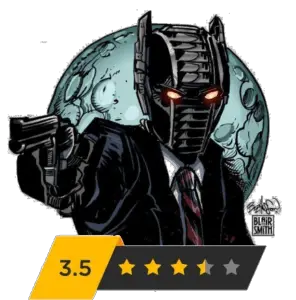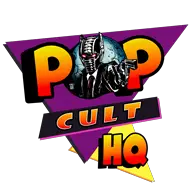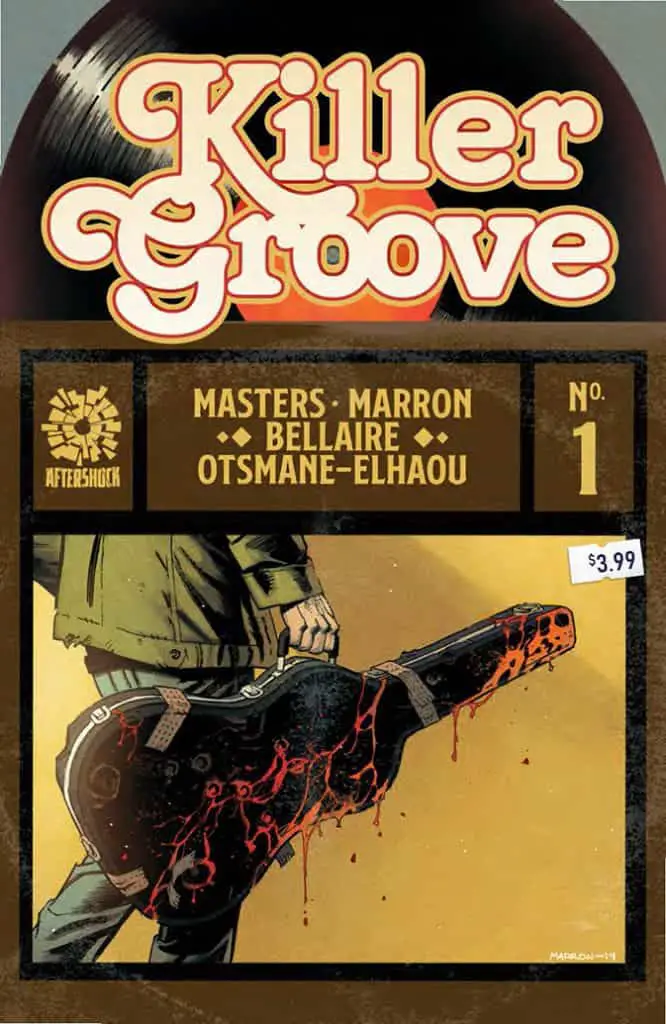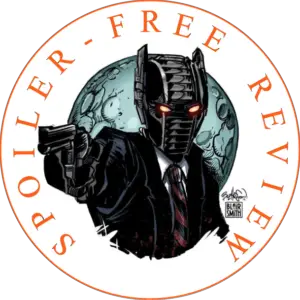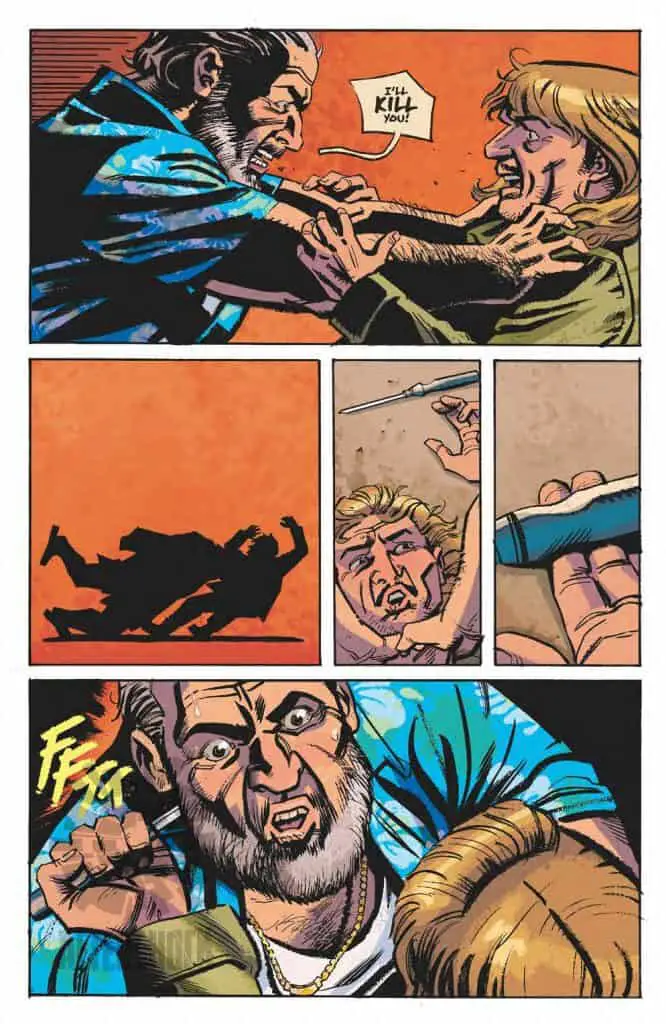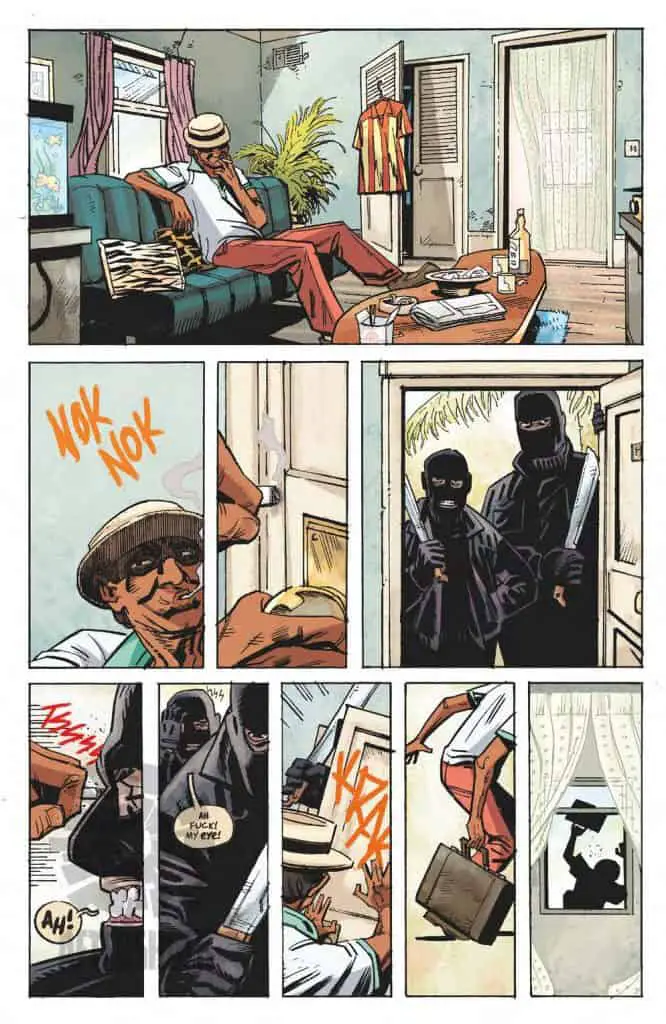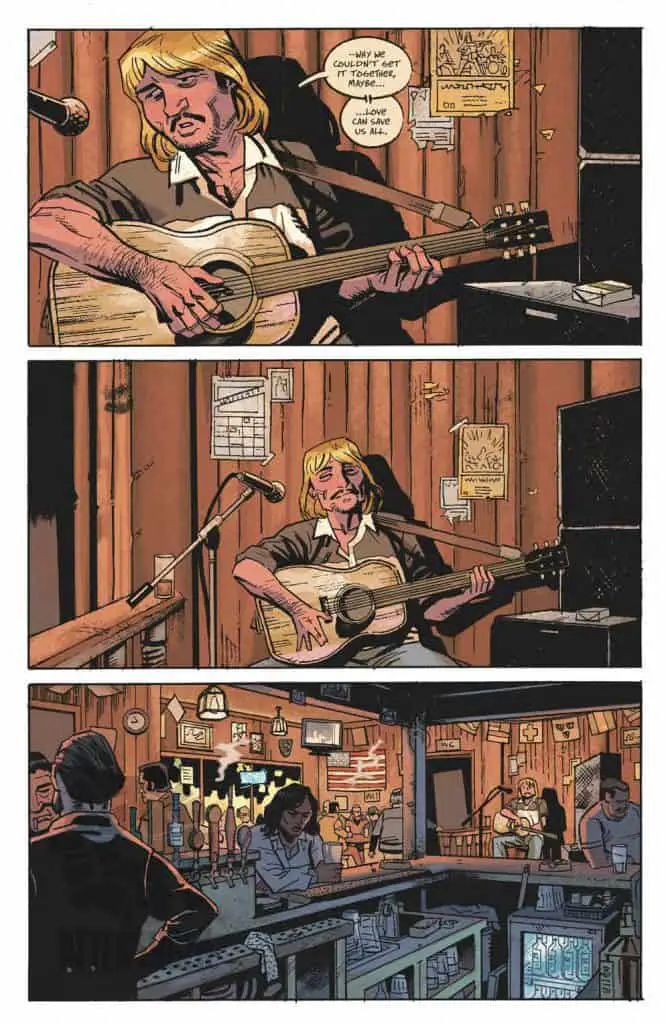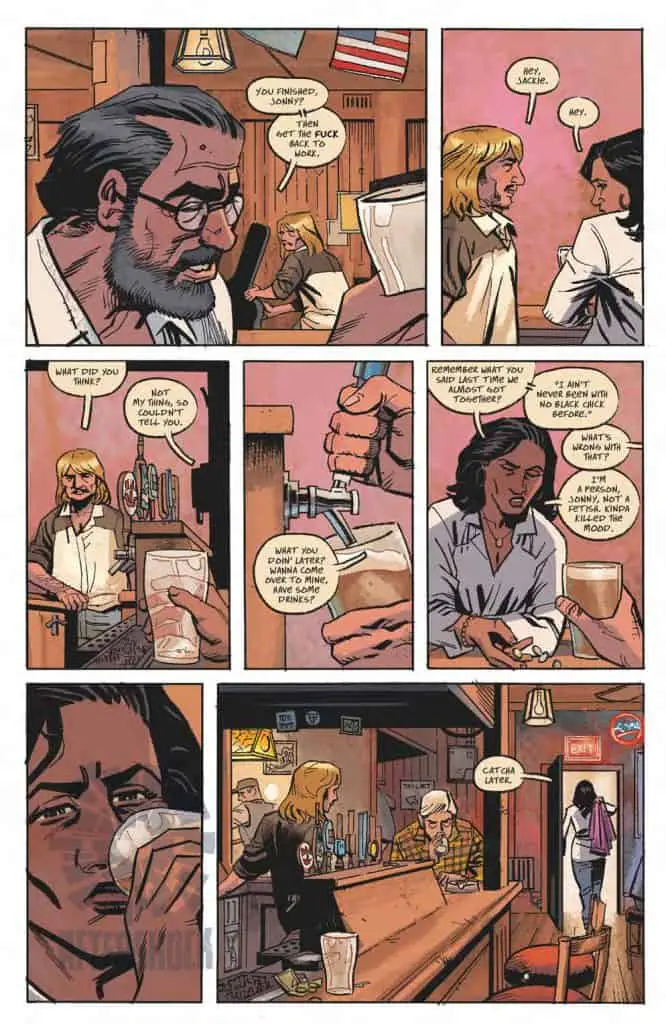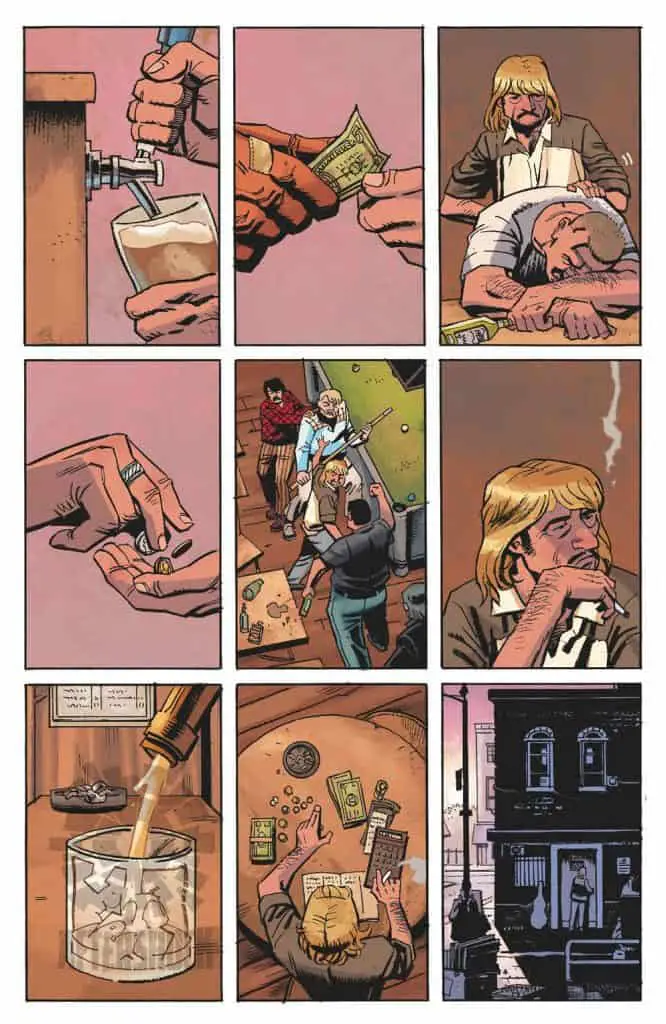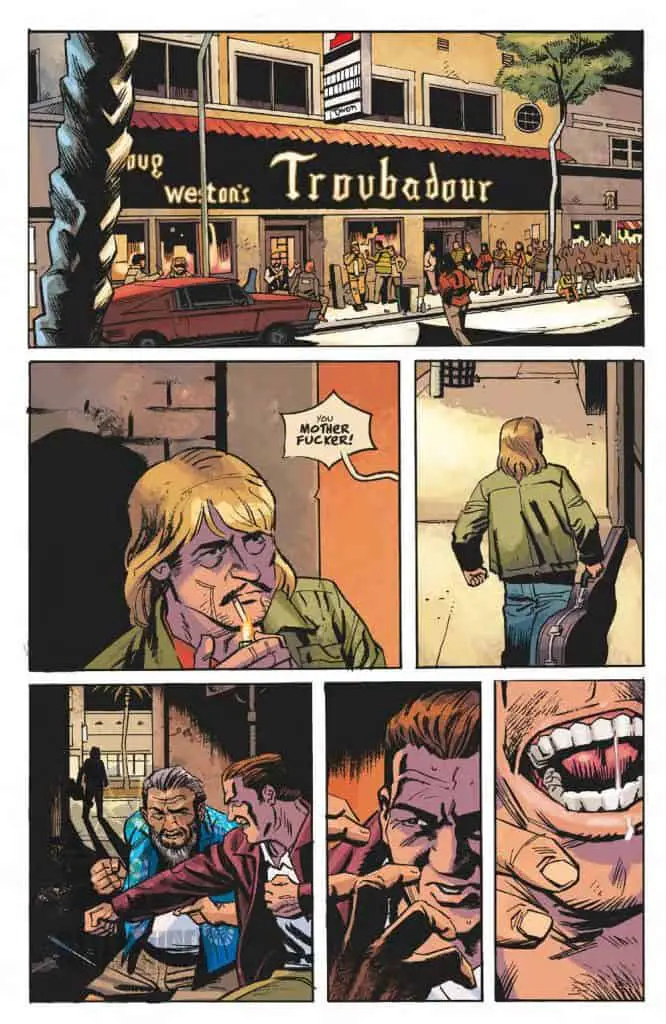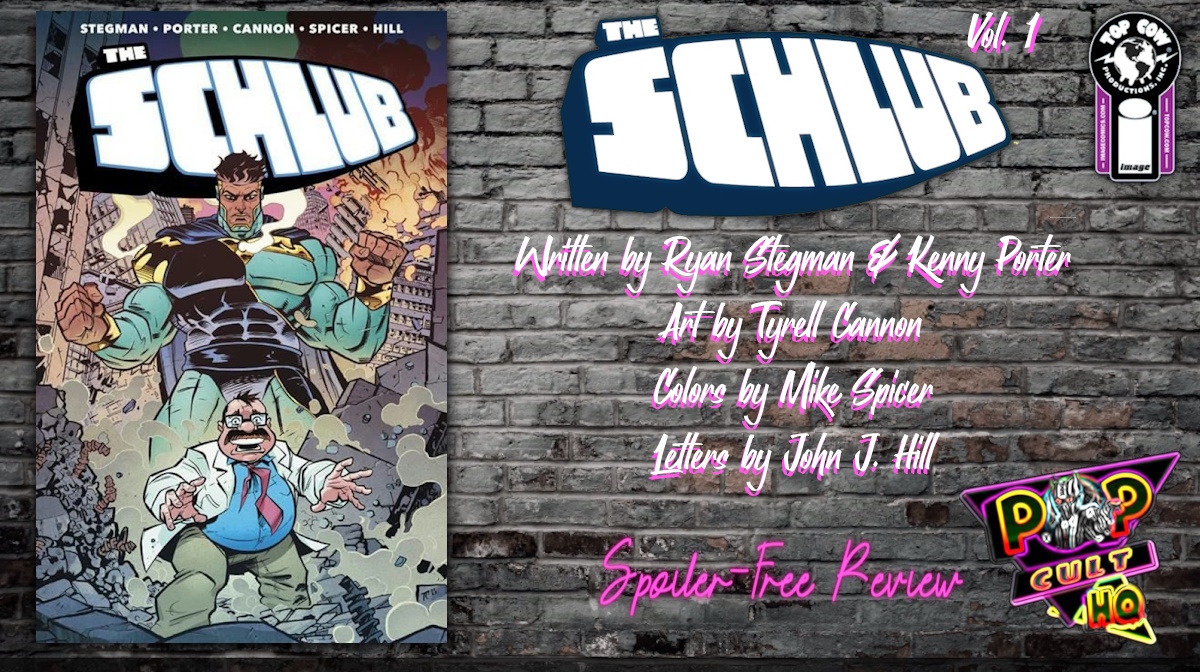PopCultHQ received an advance review copy of KILLER GROOVE #1 from AfterShock Comics. Available Wednesday, May 29th, the creative team for this series features writing from Ollie Masters, art from Eoin Marron, colors by Jordie Bellaire, and lettering from Hassan Otsmane-Elhaou.
Here’s PopCultHQ’s spoiler-free review of…
Killer Groove #1
Writer: Ollie Masters
Artist: Eoin Marron
Colorist: Jordie Bellaire
Letterer: Hassan Otsmane-Elhaou
Cover Artists:
Eoin Marron w/ Triona Farrell (Cover A)
Cliff Richards w/ Irma Kniivila (Cover B)
Pub. Date: May 29, 2019
SRP: $3.99
In 1970s Los Angeles, Jonny is one of the thousands of musicians trying to make it big while working a crummy bar job, and getting drunk with his whiskey soaked P.I. friend, Jackie. When Jonny gets tangled up with a local mob hitman, he not only finds a new and violent career, but maybe the inspiration for his music as well.
From Ollie Masters (The Kitchen, Snow Blind) and Eoin Marron (HER INFERNAL DESCENT, Army of Darkness, James Bond) comes the next rock ‘n’ roll crime sensation, with a beat that’ll kill you dead.
PopCultHQ’s Comic Book Review:
KILLER GROOVE #1
An almost-was, washed-up drifter. A downtrodden private eye. A gun for hire who could use a little help. A mysterious kid with nothing but moxie and 600 bucks. This is the seedy world of Killer Groove. A bullets n’ blues tune played in the key of L.A noir.
Writing:
Ollie Masters (The Kitchen, Snow Blind) is good at writing deadbeat loners and streetwise criminals. The problem with the way they’re written in this story is that they don’t feel too original. Off the back of some stellar music-themed work in comics lately, it looked like the time was right for another unique voice to add to the pool that also features Gunning for Hits, The Wicked + The Divine, Rock Stars, and more. The problem is the story doesn’t really offer anything new. It feels a little too safe and by the numbers in parts, and the characters are interesting enough but the story itself isn’t very interesting.
Weaving underworld dealings and missing person mysteries into a musical tapestry should work. In fairness, the criminal aspects, although a little by the numbers, are fine. Where Killer Groove doesn’t land is in the ‘Groove’ aspect of the story. Playing up the musician background of the main character and offering up a bit more than just some passing mentions of music history really would have sold this for me.
That’s not to say that this is a flop. Far from it. It’s perfectly seedy, morose, and the pacing is quite good. This may yet build to something of great intrigue and pay-off in a few issues. It just feels as though the lingering tune of a missed opportunity won’t stop playing in the background.
Art:
Eoin Marron (Sons of Anarchy Redwood Original) has a style that really evokes the period where Vertigo turned a corner into crime comics. The art is by no means perfect, but it perfectly suits the story.
It has real strength in silent scenes of sharp action. Excels at conveying pain, desperation, and brutal violence. Dank settings are well-presented and, in terms of storytelling, it often picks up the slack when the writing fades out.
The period feels and the well-worn skins that the principal characters live in are another highlight. It’s here, as well, that they listen to the script intently and work some serious skills to give it the best possible representation in visual form.
It’s gritty, smog and sun noir and takes place in the bars and alleys of the streets. This feeling of authenticity or tangibility is what really carries the working parts of Killer Groove.
Colors:
Jordie Bellaire (Hawkeye, the Vision, They’re not Like Us) is the goddess of rendering shade and color to bare-knuckle and real-world tales. When a moment calls for warmth, she washes it in warmth, bathes the images in colors that glow. When the story gets down and dirty, dark and rough, she stains the characters in dirty realism and uses her palette to give the brutality some truth. I don’t know if such a thing as ‘pop-art noir’ exists. But the work of Bellaire and the lettering in this issue may just have combined to invent it.
Letters:
Hassan Otsmane-Elhaou (Dream Daddy, The Lone Ranger) picks his punches and shows his presence sparingly in this issue. It is a “less is more” approach that really fits the bill for the small crimes genre and is doubly as effective when his uniquely-styled effects make their appearance,
The sketchy, graffiti-like spatterings of sound in the alleyway fight scene shouldn’t fit the story, but they work so well with the color work of the issue that it’s impossible to argue against them.
The speech font of the characters is reminiscent of the letter work in Stray Bullets, which is undoubtedly appropriate for a crime comic.
It’s crude, with an indie feel in parts, but works seamlessly as part of the visual team to completely package the issue as an eye-pleasing read.
As a story steeped in an affinity for music, it doesn’t rocket up the charts. But as a well-constructed, “slice of pulp crime fiction” diverse character, it has staying power. The art is especially moody and does its job well to paint the setting with authenticity. It doesn’t hit the notes it shoots for, but it has the potential to be an earworm. A slow-burning hit that is headed in the right direction.
3.5 out of 5 Stars
